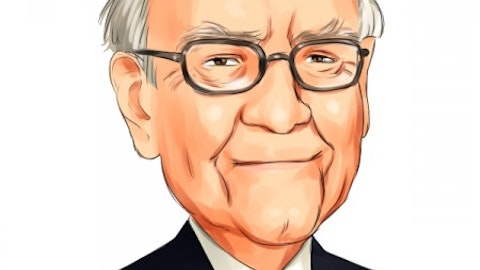The midstream industry is basically built around moving, processing, and storing oil, gas, and various refined products.
And thanks to the fixed-fee, long-term contracts that are the hallmark of the midstream industry, Phillips 66 (NYSE:PSX)’s midstream assets can go a long way in stabilizing the company’s cash flows over time; thus offsetting the volatility in refining margins.
Better yet, thanks to Phillips 66’s ownership, and management of its midstream MLP, Phillips 66 Partners, the company has a low cost, tax efficient means of paying for its ambitious midstream growth plans.

Specifically, Phillips 66 serves as the general partner, or GP, of PSXP, which means it owns the incentive distribution rights, or IDRs. This means that above a quarterly payout of $0.24 per unit of Phillips 66 Partners, Phillips 66 receives 50% of the marginal distributable cash flow, or DCF.

Source: Phillips 66 Investor Presentation
Under this symbiotic relationship with its MLP, Phillips 66 can sell its assets to PSXP, which raises external debt and equity capital from investors, to offset the construction costs of its midstream assets.
However, because it still owns 59% of the MLP, and the IDRs, Phillips 66 will still benefit from the fast-growing, and stable, stream of cash flow. Then its world class management team can then reinvest that into further diversifying its operations; as well as reward long-term investors with buybacks, and growing dividends.

Source: Phillips 66 Investor Presentation
Another primary reason why Buffett likes Phillips 66 is the conservative, quality management team led by CEO Greg Garland.
Garland was the former Senior Vice President of ConocoPhillip’s American exploration and production business, as well as President of CPChem. In total, Garland has over 30 years of experience in the petrochemical industry, either with ConocoPhillips, or heading Phillips 66.
It’s his vision that has led to the company focusing its investment dollars on the higher margin, and more stable midstream and chemical businesses, which has resulted in Phillips 66’s impressive, industry-leading profitability, and high returns on shareholder capital.
Key Risks
There are two main risks to keep in mind before becoming a part owner of this business.
First, never forget that refining is a cyclical business, with margins affected both by oil prices, and demand for the refined products.
As the last two years have shown, oil prices can’t be predicted accurately in the short to medium-term, and slowing global growth can ding demand, and thus prices for refined products such as: gas, diesel, and jet fuel.
While Phillips 66 is working hard to diversify its sales, earnings, and cash flow away from this more volatile industry, refining will continue to be the dominant swing player in the company’s earnings for quite some time.
The second risk stems from the business model of Phillips 66 Partners. Being an MLP, it pays out the majority of its DCF to investors, including Phillips 66. However, that means that it needs to constantly be tapping external debt and equity markets for the majority of its growth capital.
Since Phillips 66 is counting on PSXP to buy its midstream assets, including the billions in new midstream assets it’s currently constructing, there is a risk that fickle investors may lose their taste for midstream MLPs. This is what happened to many partnerships during the darkest days of the oil crisis.
If PSXP finds itself cut off from equity markets due to an irrationally low unit price, then it might find itself unable to buy all of the midstream assets that Phillips 66 is looking to sell it.
This in turn might force management to slow the pace of its midstream growth ambitions; hurting its forward cash flow, dividend growth potential, and valuation.
A major decline in North American energy production would not be good for the company’s midstream growth plans either.
Investors can read more about the risks of investing in MLPs here.





